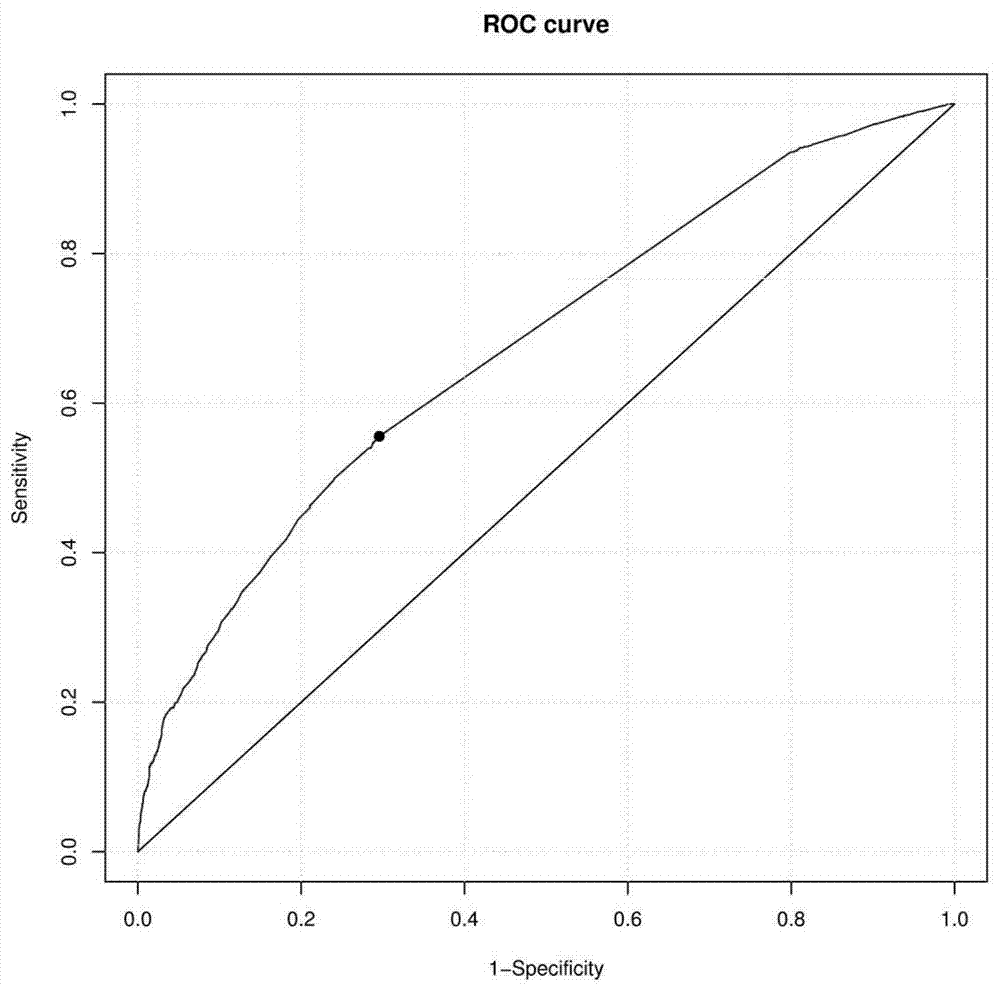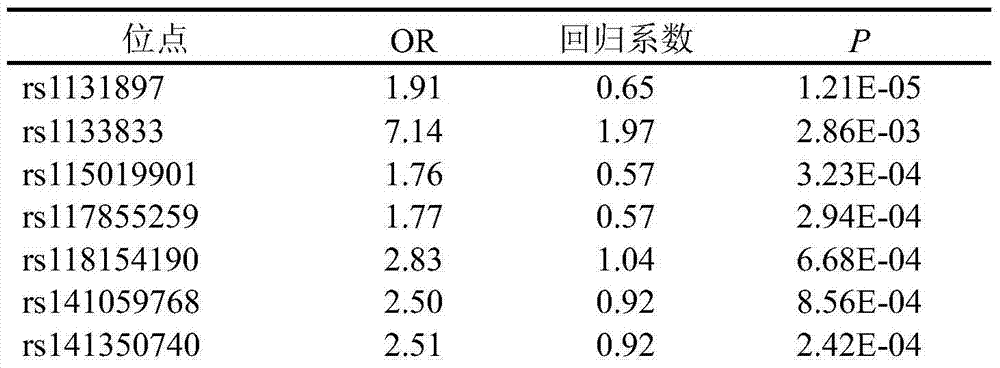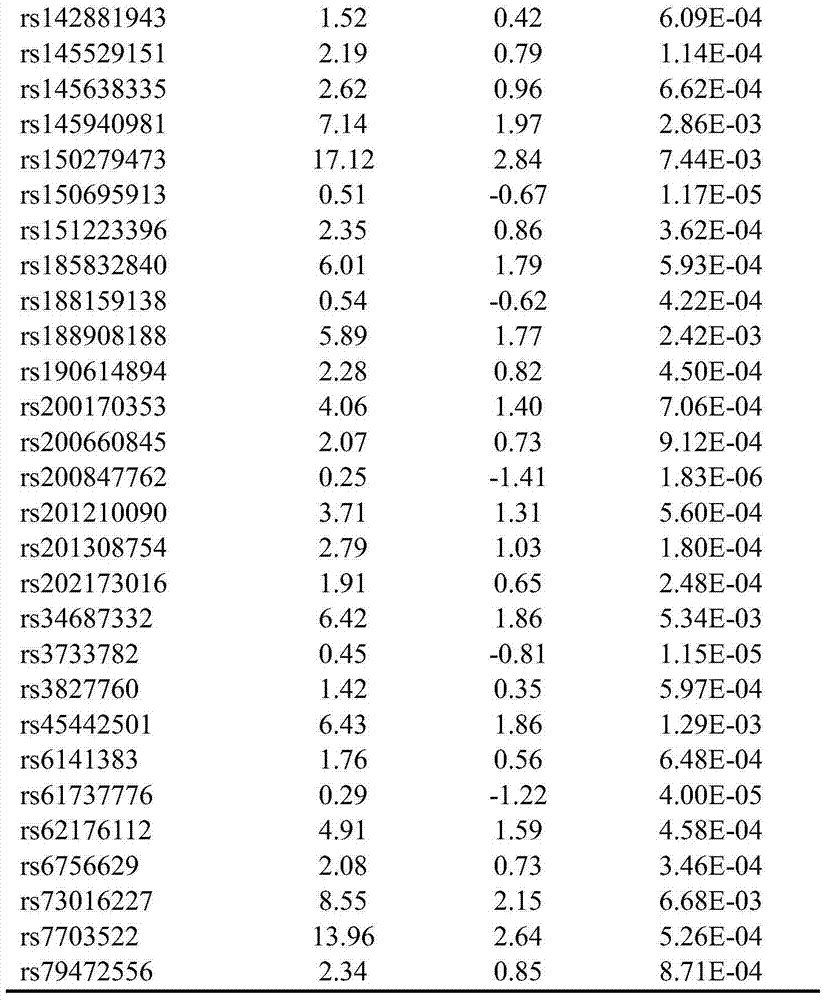Low-frequency high-penetrance genetic marker associated with auxiliary diagnosis of primary lung carcinoma and applications of marker
A genetic marker, a technology for assisting diagnosis, applied in the determination/examination of microorganisms, biochemical equipment and methods, DNA/RNA fragments, etc.
- Summary
- Abstract
- Description
- Claims
- Application Information
AI Technical Summary
Problems solved by technology
Method used
Image
Examples
Embodiment 1
[0097] The collection of embodiment 1 sample and the arrangement of sample data
[0098] The inventor collected a large number of blood samples from patients with primary lung cancer from the First Affiliated Hospital of Nanjing Medical University and Jiangsu Cancer Hospital from April 2005 to December 2011. After sorting out the sample data, the inventor selected 4336 experimental samples of whole exome microarray scanning and single genetic marker Sequenom MassARRAY genotyping of samples meeting the following criteria:
[0099] 1. Patients with primary lung cancer diagnosed by histopathology;
[0100] 2. Healthy control;
[0101] The demographic data and clinical data of these samples were collected systematically.
Embodiment 2
[0102] Example 2 Whole Exome Scanning of Genetic Markers in Peripheral Blood DNA
[0103] A total of 1386 eligible primary lung cancer patients and 2950 healthy controls were included above. These two groups of people were passed through Illumina Human Exome BeadChip (Illumina Inc., San Diego, CA) chip detection obtained relevant results. The specific steps are:
[0104] 1. Add hemolysis reagent (i.e. lysate, 40 parts) to the peripheral blood stored in the 2ml cryopreservation tube. Dilute the TrisHcl solution to 2000ml, the same below), turn it upside down and mix it completely.
[0105] 2. Removal of red blood cells: Fill the 5ml centrifuge tube to 4ml with hemolysis reagent, mix by inverting, centrifuge at 4000rpm for 10 minutes, and discard the supernatant. Add 4ml of hemolysis reagent to the precipitate, invert and wash again, centrifuge at 4000rpm for 10 minutes, and discard the supernatant.
[0106] 3. Extract DNA: Add 1ml extract solution to the precipitate (each...
Embodiment 3
[0116] Example 3 Sequenom MassARRAY Genotyping of Single Genetic Markers
[0117] The genetic markers associated with the onset of primary lung cancer found by the above-mentioned whole exome scan were detected on another 1500 primary lung cancer cases and 3000 healthy controls through the Sequenom MassARRAY genotyping platform. The specific steps are as follows:
[0118] 1. Add the hemolysis reagent to the peripheral blood stored in the 2ml cryopreservation tube, mix it upside down and transfer it completely.
[0119] 2. Removal of red blood cells: Fill the 5ml centrifuge tube to 4ml with hemolysis reagent, mix by inverting, centrifuge at 4000rpm for 10 minutes, and discard the supernatant. Add 4ml of hemolysis reagent to the precipitate, invert and wash again, centrifuge at 4000rpm for 10 minutes, and discard the supernatant.
[0120] 3. Extract DNA: Add 1ml of extract solution and 8μl of proteinase K to the precipitate, shake and mix well on the shaker, and bathe in 37°C w...
PUM
| Property | Measurement | Unit |
|---|---|---|
| Sensitivity | aaaaa | aaaaa |
Abstract
Description
Claims
Application Information
 Login to View More
Login to View More - R&D
- Intellectual Property
- Life Sciences
- Materials
- Tech Scout
- Unparalleled Data Quality
- Higher Quality Content
- 60% Fewer Hallucinations
Browse by: Latest US Patents, China's latest patents, Technical Efficacy Thesaurus, Application Domain, Technology Topic, Popular Technical Reports.
© 2025 PatSnap. All rights reserved.Legal|Privacy policy|Modern Slavery Act Transparency Statement|Sitemap|About US| Contact US: help@patsnap.com



